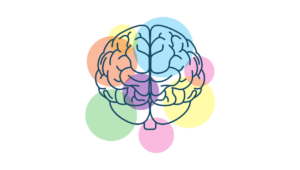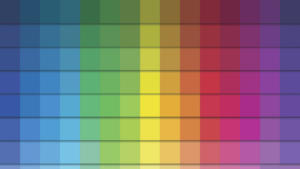In the ever-evolving realm of digital design, staying updated with the latest trends is vital for any web designer. The intersection of user expectations, technological advancements, and creative innovations makes web design a dynamic field. As we sail through 2024, here are the top web design trends that designers and developers should be well-acquainted with. Check the top web design trends, the best things to do, and what designers need to know to dominate the market.
1. Responsive Design 2.0 Web Design Trends
While responsive design isn’t new, its importance has been amplified with the rise of diverse devices. The modern responsive design goes beyond screen size adjustments. It considers device orientation, user settings, and even environmental conditions, ensuring a seamless experience across devices.
2. The Age of Dark Mode

Dark mode has moved from a mere trend to a standard feature. As applications and operating systems incorporate it, web designs are following suit. Not only is it visually appealing, but it also reduces eye strain, making nighttime browsing more comfortable.
3. Dynamic, Fluid Typography Web Design Trends
Typography is undergoing a transformation. With variable fonts and adaptable typography technologies, websites can now adjust text dynamically based on user preferences and device specifics. It’s not just about size, but weight, style, and spacing, offering a truly tailored reading experience.
4. Interactive UX with Scroll-triggered Animations
Scrolling is no longer just about navigating a page. With scroll-triggered animations, designers can craft a story, guiding users through a captivating journey as they move down a page. Check the top web design trends, advancements & innovations, the best things to do, and what designers need to know to dominate the market.
5. Eco-friendly Web Design Trends
Sustainability is at the forefront of many industries, and web design is no exception. Designers are now optimizing graphics, streamlining code, and choosing green hosting solutions to minimize carbon footprints.
6. Neumorphism’s Subtle Aesthetic
Blurring the lines between realism and skeuomorphism, neumorphism offers a fresh, semi-flat design with subtle shadows, highlights, and soft elements. It’s an aesthetic that mimics real-world objects while maintaining digital simplicity.
7. AI-driven Personalization: What Designers Need To Know?
Artificial Intelligence is weaving its way into web design, offering real-time site personalization. From dynamic content recommendations to tailored user interfaces, AI is reshaping user experiences to dominate with web design trends.
8. Embracing Retro and Vintage Vibes
In a digital age dominated by futuristic designs, there’s a resurgence of retro aesthetics. Vintage typography, muted color palettes, and classic layouts are making a comeback, offering a nostalgic touch to modern designs.
9. Enhanced Web Accessibility
Inclusivity is paramount. Designers are adopting techniques that make sites accessible to everyone, including those with disabilities. Moreover, think contrasting color schemes, keyboard-friendly navigation, and screen reader optimizations.
10. Haptic Feedback and Sensory Design
As devices become more sophisticated, web designs are exploring sensory feedback. Haptic feedback, subtle vibrations, and even sound cues provide an additional layer of user interaction. So, making browsing more tactile and immersive, this is what designers need to know.
11. 3D Elements and Immersion
The inclusion of 3D elements in web design has surged in popularity. These designs, when paired with high-quality animations, can create an immersive experience that captivates users. With advancements in WebGL and frameworks like Three.js, creating interactive 3D elements has never been more accessible.
12. Voice User Interface (VUI) Web Design Trends
With the rise of voice assistants like Alexa, Siri, and Google Assistant, the web is rapidly adapting to voice commands. Websites are now incorporating voice search and navigation capabilities. So, providing a hands-free browsing experience.
13. Micro-interactions: The Devil’s in the Details
Subtle animations, such as a button slightly bouncing when clicked or a loader entertaining the user, can dramatically enhance user experience. In addition, these micro-interactions offer feedback, guide tasks, and make the digital platform feel a tad more human.
14. Virtual and Augmented Reality Integrations
VR and AR are no longer just for gaming. Websites, especially those in e-commerce and real estate, are leveraging these technologies to offer virtual tours, product try-ons, and immersive experiences right from the browser.
15. Biometric Authentication
As security remains paramount, websites are gradually adopting biometric authentication methods. From facial recognition to fingerprint scanning, these techniques not only boost security but also streamline the user experience by simplifying logins.
16. Multimedia Integration Web Design Trends
Combining text with videos, podcasts, and interactive infographics is becoming a standard. This multimedia approach caters to varied user preferences. In addition, ensuring that content is accessible in multiple formats.
17. Design for Emotional Well-being
In a world that’s increasingly digital, web designers are considering the emotional impact of their designs. Calming color schemes, mindfulness reminders. So, interfaces that encourage breaks are trends that focus on user mental health.
18. Geometric and Abstract Shapes
Irregular shapes, layers, and floating designs add depth and interest to websites. They break the monotony of traditional layouts. In addition, guiding the user’s eyes in non-linear patterns and making content discovery more engaging.
19. Cross-cultural Design
With the global reach of the internet, designers are crafting websites that resonate with a multicultural audience. This includes considering color meanings, language nuances. Moreover, cultural symbols to ensure inclusivity.
20. Whimsical Cursors and Custom Icons Web Design Trends
The humble cursor is getting a makeover. Custom cursors that change based on the page section or user interaction add an element of surprise. Similarly, tailored icons make a website stand out while maintaining brand identity.
Web Design Trends Conclusion
In 2024 and beyond, web design will continue to evolve, melding the past, present, and future into cohesive, user-centric experiences. Staying updated with these trends is not just about aesthetic relevance but ensuring usability, accessibility, and engagement. For designers and developers, embracing these trends will undoubtedly pave the way for a more innovative and inclusive digital landscape.



